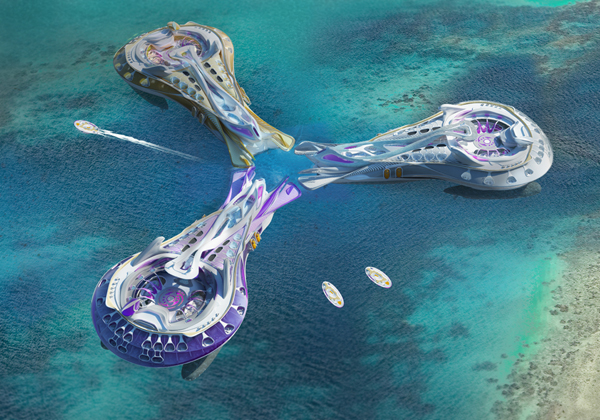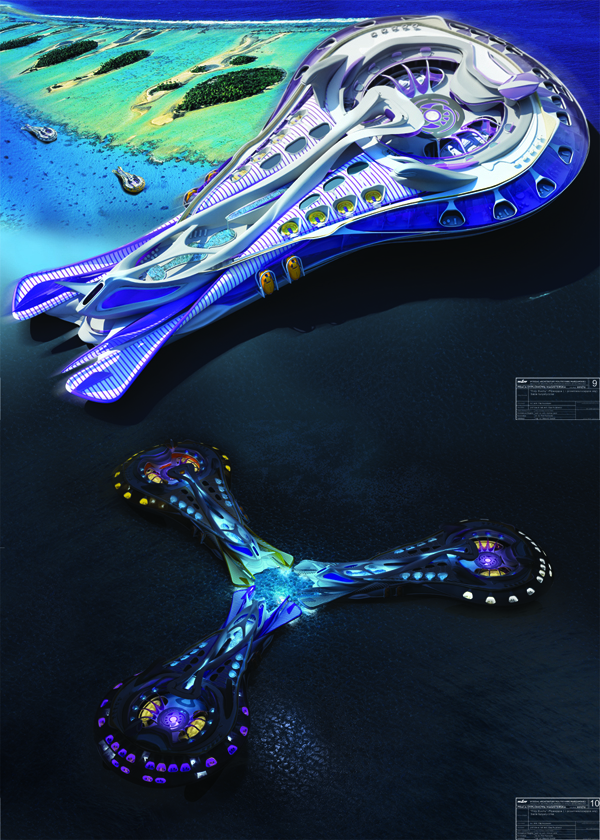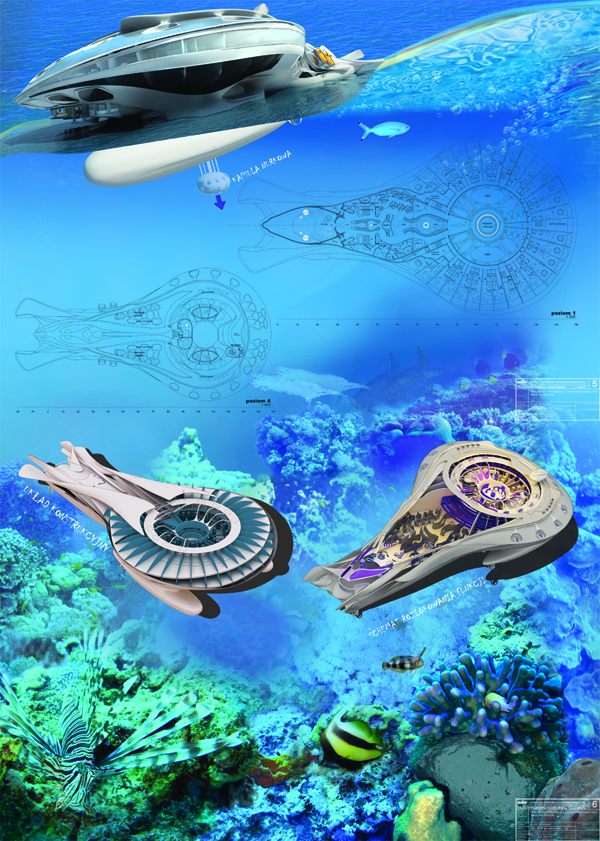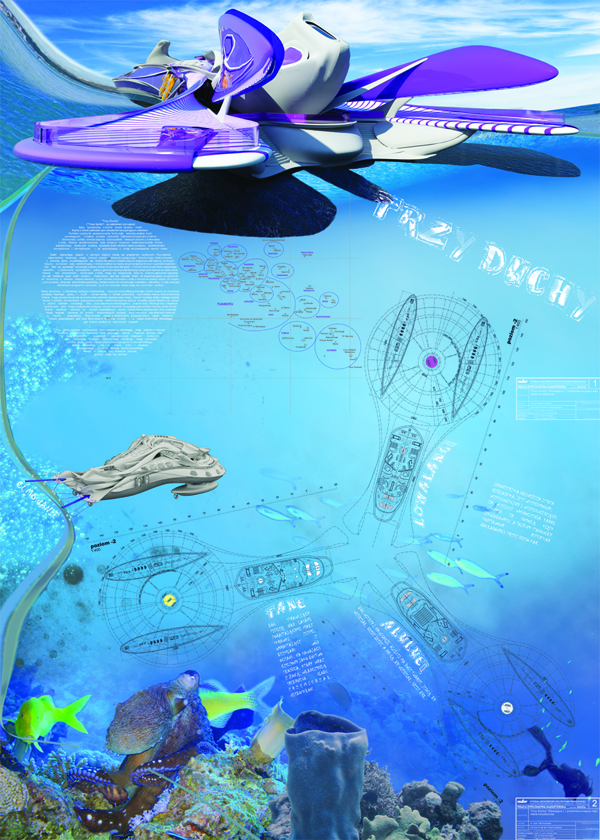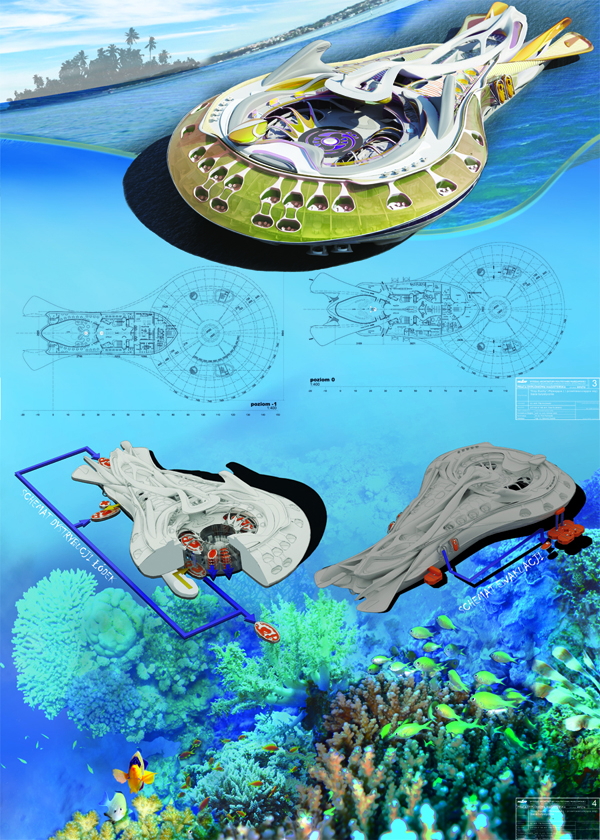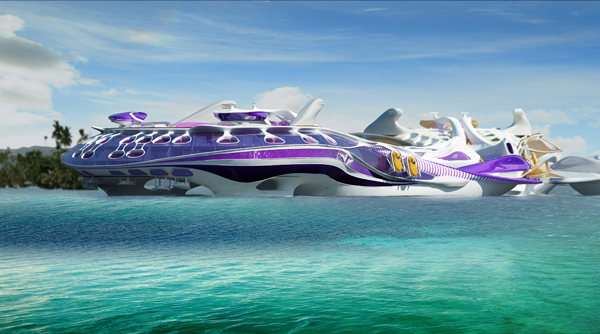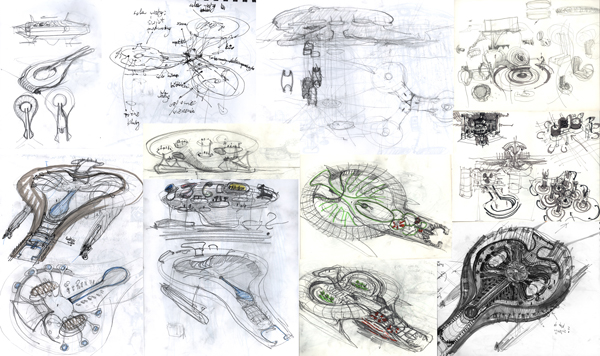 The fluid shapes of the building respond to two conditions. There is the compact and continuous adjacency to the airport on one side and a convex and eroded condition on the other side in order to maximise the perimeter, to embrace nature and to take maximum advantage of views.
The fluid shapes of the building respond to two conditions. There is the compact and continuous adjacency to the airport on one side and a convex and eroded condition on the other side in order to maximise the perimeter, to embrace nature and to take maximum advantage of views.
The building’s “interior urbanism” encourages interaction amongst different programmatic modules and sharing of facilities open to the public, whilst maintaining a practical vertical stacking for each module, aimed at rationalizing services and circulation. Critical importance has been assigned to clarity of access and to the relation of entry to both horizontal and vertical circulation within the complex.
Critical importance has been assigned to clarity of access and to the relation of entry to both horizontal and vertical circulation within the complex.
 Critical importance has been assigned to clarity of access and to the relation of entry to both horizontal and vertical circulation within the complex.
Critical importance has been assigned to clarity of access and to the relation of entry to both horizontal and vertical circulation within the complex.
These will be related to three major voids or “canyons” cutting through the building section and merging in an open plan top floor.
These “canyons” cover three critically important functions: to indicate major points of entry into the complex, to reinforce the major circulation routes (both horizontal and vertical) and to create a variety of depths of floor plate appropriate to the mix of uses to be accommodated.
 The top (8th) level performs as open plan “streetscape” – a promenade dotted with retail (brand space and showrooms), café and restaurants. Using a “shopping mall” paradigm, Spa and Sky Bar belonging to the 5 starts hotel on the north end and exhibition plus restaurant on the south end, act as anchor attractors propagating visitors’ flow throughout the building’s length.
The top (8th) level performs as open plan “streetscape” – a promenade dotted with retail (brand space and showrooms), café and restaurants. Using a “shopping mall” paradigm, Spa and Sky Bar belonging to the 5 starts hotel on the north end and exhibition plus restaurant on the south end, act as anchor attractors propagating visitors’ flow throughout the building’s length. Because of its mixed-use nature along the lines of a shopping mall, we propose that the complex should be managed and operated as such, i.e. brand orientated, performance related, feedback rich, with fl exible rent and leasing structures to encourage the cohabitation of complementary uses.
Because of its mixed-use nature along the lines of a shopping mall, we propose that the complex should be managed and operated as such, i.e. brand orientated, performance related, feedback rich, with fl exible rent and leasing structures to encourage the cohabitation of complementary uses.
Location: Kloten, Switzerland
Program: Competition Entry for mixed-use building: office, brand space, medical clinics, education facilities, hotel, spa, gym, restaurants, cafes
Date: 2009
Client: Unique
Program: Competition Entry for mixed-use building: office, brand space, medical clinics, education facilities, hotel, spa, gym, restaurants, cafes
Date: 2009
Client: Unique
Architect: Zaha Hadid Architects
Design: Zaha Hadid with Patrik Schumacher
Project Architects / Design Associate: Manuela Gatto
Technical Associate: Dillon Lin
Project Team: Hannes Schafelner, Maren Klasing, Teoman Ayas, Lisamarie Ambia, Camiel Weijenberg, Seda Zirek, Ai Sato, Andres Madrid, Amit Gupta, Sophie Le Bienvenu, Rashiq Muhamadali, Roxana Rakshani, Nupur Shah, Fabian Hecker, Saleem Jalil, Daniel Piccinelli
Local Architect: Burkhardt + Partners AG
Interior Design: Woods Bagot
Structural Engineer: Adams Kara Taylor
Facade Engineer: ARUP Berlin
Cost Consultant: Baukostenplanung Ernst
Lighting Consultant: Office for Visual Interaction (OVI)
Fire Consultants: Amstein + Walthert
Landscape Architect: Gross Max
Brand Consultant: Pragma UK
Design: Zaha Hadid with Patrik Schumacher
Project Architects / Design Associate: Manuela Gatto
Technical Associate: Dillon Lin
Project Team: Hannes Schafelner, Maren Klasing, Teoman Ayas, Lisamarie Ambia, Camiel Weijenberg, Seda Zirek, Ai Sato, Andres Madrid, Amit Gupta, Sophie Le Bienvenu, Rashiq Muhamadali, Roxana Rakshani, Nupur Shah, Fabian Hecker, Saleem Jalil, Daniel Piccinelli
Local Architect: Burkhardt + Partners AG
Interior Design: Woods Bagot
Structural Engineer: Adams Kara Taylor
Facade Engineer: ARUP Berlin
Cost Consultant: Baukostenplanung Ernst
Lighting Consultant: Office for Visual Interaction (OVI)
Fire Consultants: Amstein + Walthert
Landscape Architect: Gross Max
Brand Consultant: Pragma UK
Gross Building Area: 200,000m2
Site Area: 27,845m2
Site Dimensions approx.: 550m long x 70m wide
Footprint: 33,170 m2 (including bridge and upper levels)
Site Area: 27,845m2
Site Dimensions approx.: 550m long x 70m wide
Footprint: 33,170 m2 (including bridge and upper levels)






















